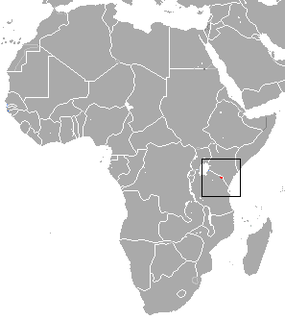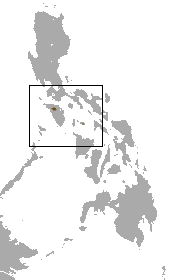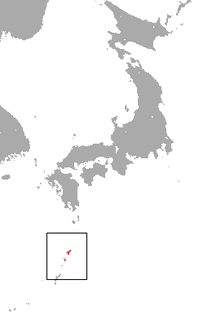
The genus Crocidura is one of nine genera of the shrew subfamily Crocidurinae. Members of the genus are commonly called white-toothed shrews or musk shrews, although both also apply to all of the species in the subfamily. With over 180 species, Crocidura contains the most species of any mammal genus. The name Crocidura means "woolly tail", because the tail of Crocidura species are covered in short hairs interspersed with longer ones.

The elongated shrew is a species of mammal in the family Soricidae. It is endemic to the island of Sulawesi in Indonesia. It lives in the forests of central, northern, and eastern Sulawesi from 200 to 2000 meters elevation.

The greater red musk shrew is a species of mammal in the family Soricidae. It is found in Lesotho, Mozambique, South Africa, and Eswatini. Its natural habitats are moist savanna, temperate grassland, and rural gardens. Like most shrew species, C. flavenscens is nocturnal. The greater red musk shrew is considered to be asocial and territorial, with males using scent marking to establish their territory. Males appear to be more aggressive than females, and their aggression increases with greater population density.

The Peters's musk shrew is a species of mammal in the family Soricidae. It is endemic to Tanzania.

The Luzon shrew is a species of mammal in the family Soricidae. It is endemic to the Philippines.

The Mindoro shrew is a species of mammal in the family Soricidae. It is endemic to the Philippines.

The Sunda shrew is a species of mammal in the family Soricidae found in Indonesia and Malaysia.

The black-footed shrew is a species of mammal in the family Soricidae. It is endemic to northern and central Sulawesi, Indonesia where it lives on the floor of the tropical forests. The International Union for Conservation of Nature has assessed its conservation status as being of "least concern".

The Ryukyu shrew , also known as Orii's shrew, is a species of mammal in the family Soricidae. It is endemic to Japan. It is threatened by habitat loss.

The Sulawesi white-handed shrew or Temboan shrew is a species of mammal in the family Soricidae. It is endemic to the island of Sulawesi in Indonesia. It is a fairly common species and the population seems stable so the International Union for Conservation of Nature has assessed its conservation status as being of "least concern".

The Sicilian shrew is a species of mammal in the family Soricidae. It is found in Sicily (Italy) and Gozo (Malta). Its natural habitat is temperate shrubland.

The Cretan shrew is a species of mammal in the family Soricidae. It is endemic and exclusive to the island of Crete, Greece. Its natural habitat is temperate shrubland, and the animal is threatened by habitat loss. It is found in the mountainous highlands of Crete, having been displaced from lower altitudes by the lesser white-toothed shrew.

Crocidura hikmiya is a species of shrew described from the rainforests of Sri Lanka, based on both morphological and molecular data. Its closest sister species is the Sri Lankan long-tailed shrew, another Sri Lankan crocidurine shrew restricted to the high-elevation habitats of the Central Highlands. C. hikmiya has a shorter tail than the Sri Lankan long-tailed shrew. Most of the other characteristics that distinguish the two species are osteological natured .

The Kinabalu shrew is a species in the family Soricidae. It is endemic to the mountain Mount Kinabalu on Borneo, and its sister peak, Mount Tambuyukon.

The peninsular shrew is a species of mammal in the family Soricidae. It is found in the Malay Peninsula and Thailand. It is also found on the adjacent islands of Koh Samui, Pulau Tioman, and Pulau Mapor. This species has recently been synonymized with Crocidura malayana

The Negev shrew, also known as the Ramon's shrew is a species of mammal in the family Soricidae. So far, it is only known from Israel. It is found in three regions: Mizpe Ramon and Sede Boqer in the Negev Desert, and Sartaber at the northern edge of the Judean Desert. It is likely that the species occurs more widely in the region than currently known. The three locations in which the species occur are rocky desert areas at altitudes between 200 and 950 metres above sea level. The Negev shrew is light gray with a slightly lighter underpart. It is also relatively small.
The Chinese white-toothed shrew is a species of mammal in the family Soricidae.

The Indochinese shrew is a species of white-toothed shrew native to Southeast Asia. It was first identified in 1922 by Herbert C. Robinson and C. Boden Kloss. The species is often taxonomized as a subspecies Horsfield's shrew, but bears a different range, occurring in Myanmar, Vietnam, and the Yunnan province of China. C. indochinensis is on the smaller end of shrews, with dark brownish gray fur and a long, slender tail.
The Phu Hoc shrew is a species of white-toothed shrew native to the island of Phú Quốc, Vietnam. The species was first described by Abramov et al. in 2008. The species' haplogroup is most closely related to the Southeast Asian shrew and C. dracula.
Sokolov's shrew is a species of mammal in the family Soricidae. It is endemic to Vietnam.

















